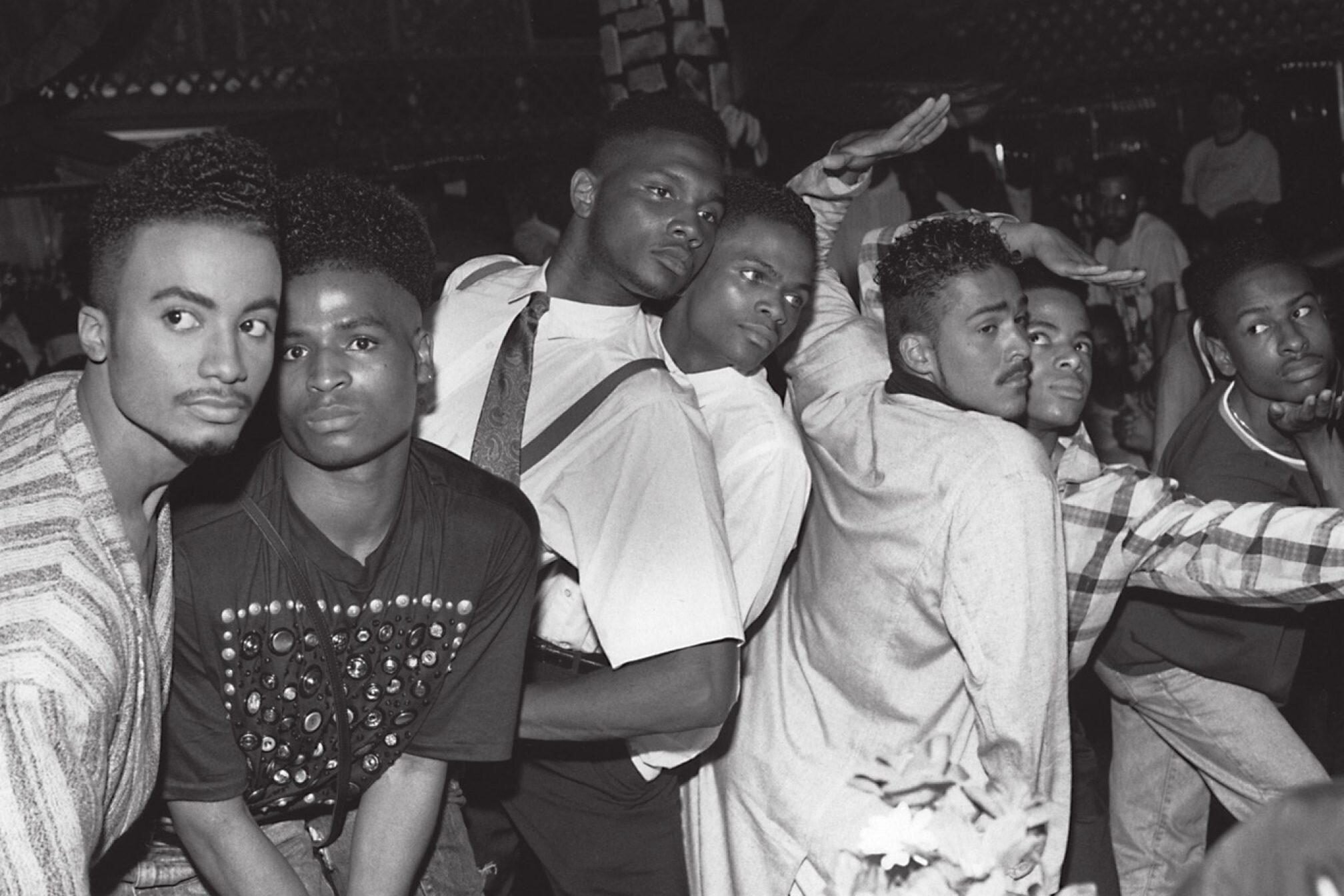
A Love Supreme for the modern movement. Celebrating multiplicity, “Ghetto Gospel: The Experience” holds many things at once.
Mandela, lead voice of VibeMuzik, guides you through an audiovisual odyssey, exploring and celebrating community, Blackness, queerness, and the histories thereof. Traveling through collective memory, their music delivers a sermon for the disenfranchised; taking us to the streets, to church, to the club, and back to the streets again.
story synopsis
A Love Supreme for the modern movement. Celebrating multiplicity, “Ghetto Gospel: The Experience” holds many things at once. The visuals of this short film EP mirror its various musical influences, taking the viewer on an odyssey through space and time, examining and celebrating the collective memory and experiences of queerness and Blackness. The short film is a four-part sermon, ushering you through its elements: “Babylon,” “Know Yourself,” “Non-Binary,” and “I Am OK.”
painting by Kehinde Wiley
the sound
VibeMuzik, under the ANYxMEANS label, will take you on a musical journey with their electrifying blend of funk, soul, gospel, and jazz. Formed early in the midst of the COVID-19 pandemic, VibeMuzik features lead singer Mandela "Msanii" Baylis and a fabulous collective of musicians, featuring guitarist D’Wayne Wiggins from band Tony! Toni! Toné!. All artists hail from Oakland, CA.
Mandela created the artist collective ANY×MEANS because they wanted to see more inclusive creative spaces for members of the QTBIPOC+ community to feel safe in, performing as their authentic selves.
the time is now!
“The time is now!” –we open with the song “Babylon,” our call to worship, or rather, a call to action, right in the streets of Oakland. This song calls for a rebirth, though fire. Already shot, this segment of the short film depicts Mandela, machetes in hand, walking the streets with their band, VibeMuzik, and two spiritual guides, who are dressed in all white
This segment is about revolution; in order to be reborn, you must burn like a phoenix. The song carries a rough rock and roll edge that cries out with the lament of organ pipes and punch of electric guitar. Everything in black and white, the viewer is confronted with images of unrest and inequity, weaved throughout the band’s street performance.
I. babylon
II. know yourself
Next, we gather our congregation in “Know Yourself.” The category is church! Come as you are, celebrate who you are in our church ball rock-and-roll extravaganza. This segment of the film places Mandela and the band in front of a congregation at San Francisco’s legendary Church of 8 Wheels, a historical church turned roller rink.
Through this song in the visual EP, we explore the importance and themes of Black church and Queer ballroom cultures, creating a space where both can be celebrated. Honoring and marrying the pageantry of these cultures, each character of the congregation is called upon to present themselves down the aisle to serve for their blessing.
This segment also features references to church praise dancing and to Alvin Ailey’s dance piece, “Wade in the Water” from his work Revelations.
Suddenly, in “Non-Binary,” you find yourself amongst silent film stars in a smoky speakeasy, teeming with sensual discovery. Prohibition-era speakeasies allowed for certain queer and Black communities to thrive behind closed doors. During the 20s-40s, Black and queer vaudeville and film performers such as Marlene Dietrich, Josephine Baker, and Gladys Bently, were taking the main stage.
This segment of the film pays tribute to this early 20th century history with a classic R&B music video twist. Using silent film cards, we tell a story about Love.
Love walks into their favorite speakeasy and is taken by Mandela, who is performing for the establishment. As the sensual song and the evening unfold, Love and Mandela engage in a duck and dodge romance filled with missed chances. Love will have to let go of their judgements to freely embrace themselves and their sexuality.
iv. i am okay.
Lastly, the benediction.
“I Am OK” is a blessing for the streets; the final celebration. This last segment draws inspiration from the vibrance of Oakland murals and of artist Kehinde Wiley’s portraiture. It’s also inspired by Frederick Douglass’s efforts to become “The Most Photographed Man of the 19th Century.” Mirroring the lyrics of the song, this part of the film is about self affirmation.
Lead singer Mandela and guitarist D’Wayne Wiggins (of Tony! Toni! Toné!) ride around the colorful city streets on their way to a small community performance at Ramsess Art Garden in Downtown Oakland. Along the way, we see many versions of Mandela through live portraits in different locations: Mandela the Beautiful, Mandela the Father, Mandela the Son, the Friend, the Artist, etc.
Finally, in all white, surrounded by a lush garden, donned in cowrie shells, and bordered by a golden frame, we are left with our last, regal image of Mandela.

ghetto gospel
the experience











